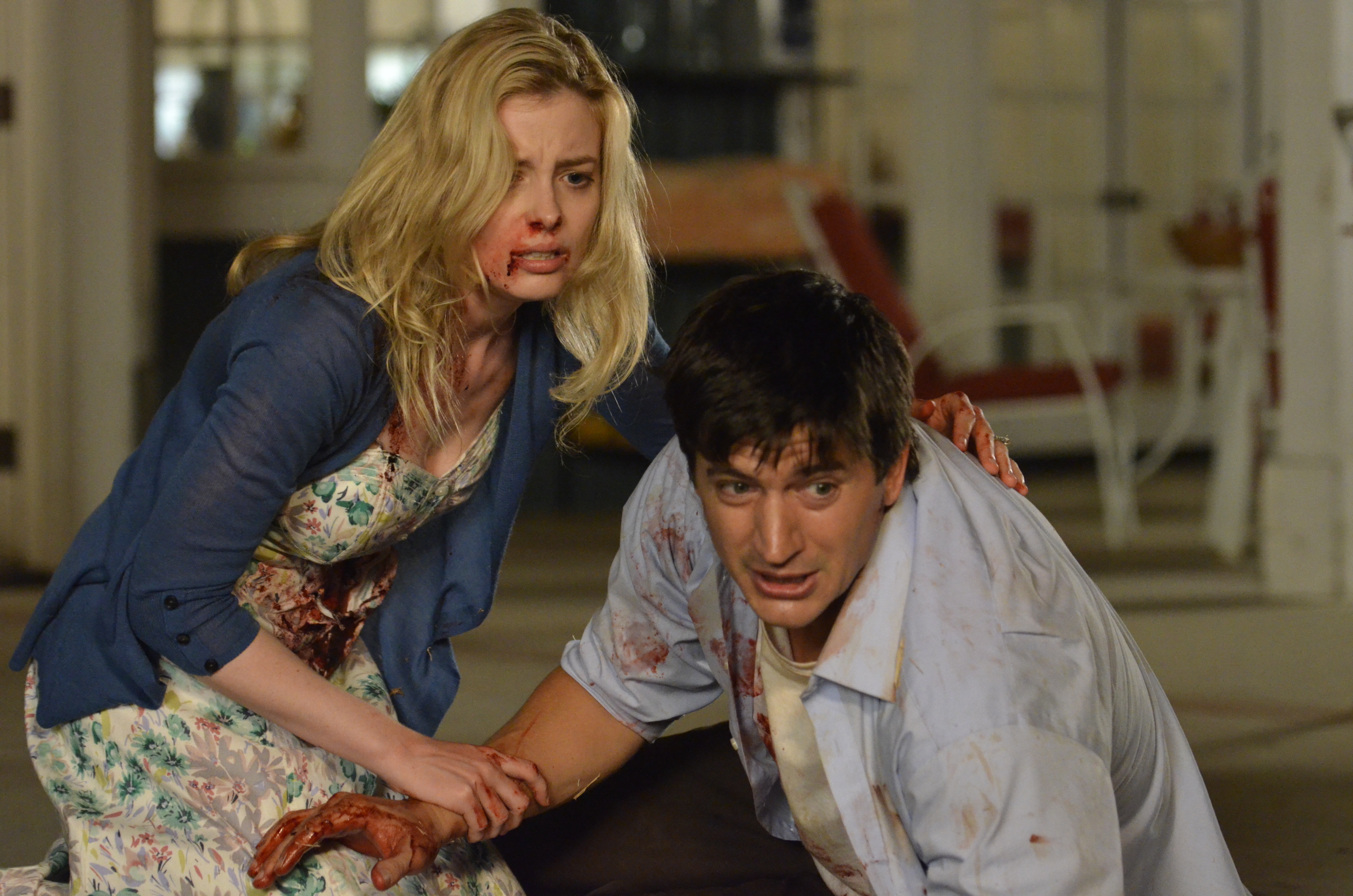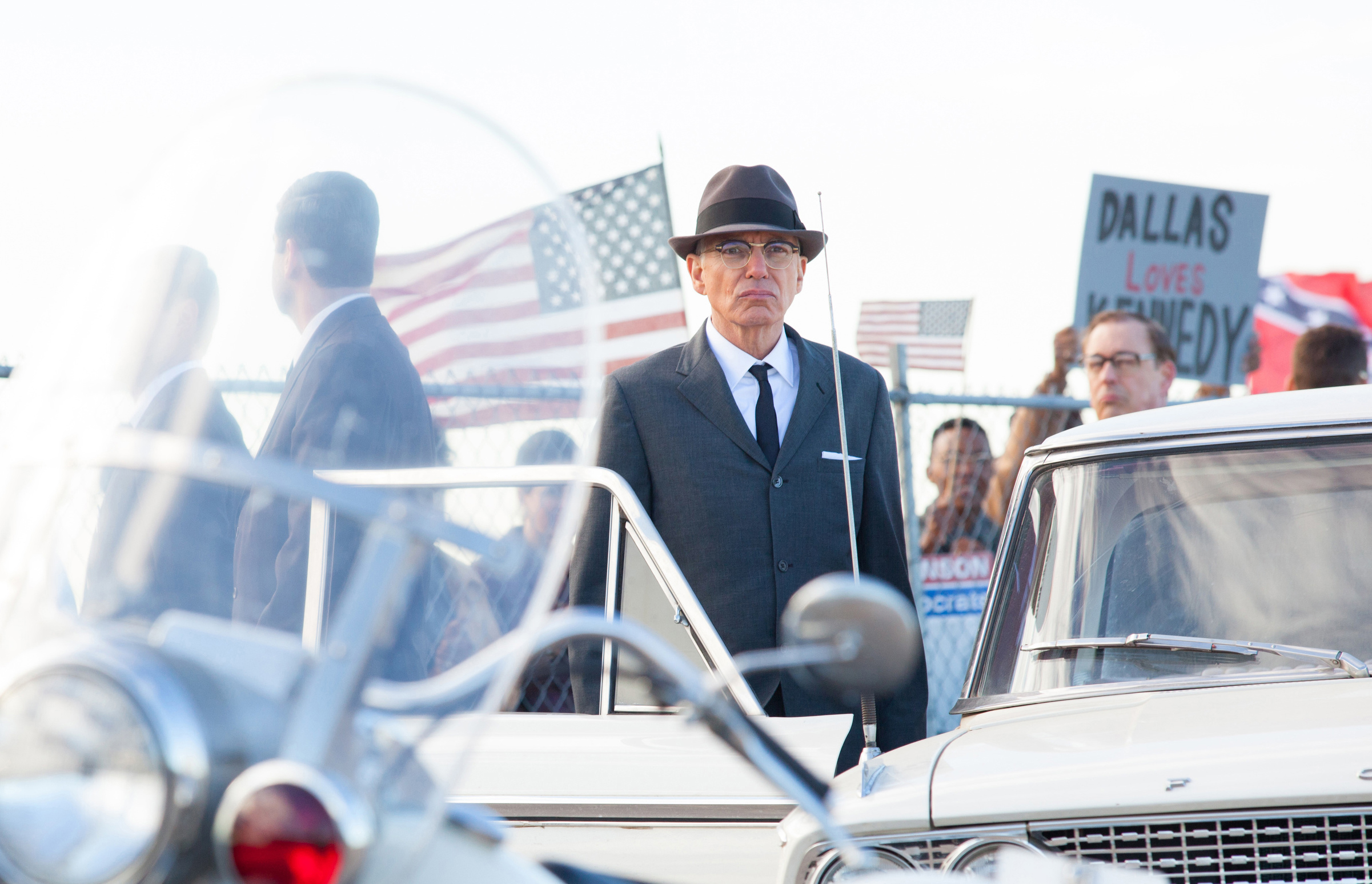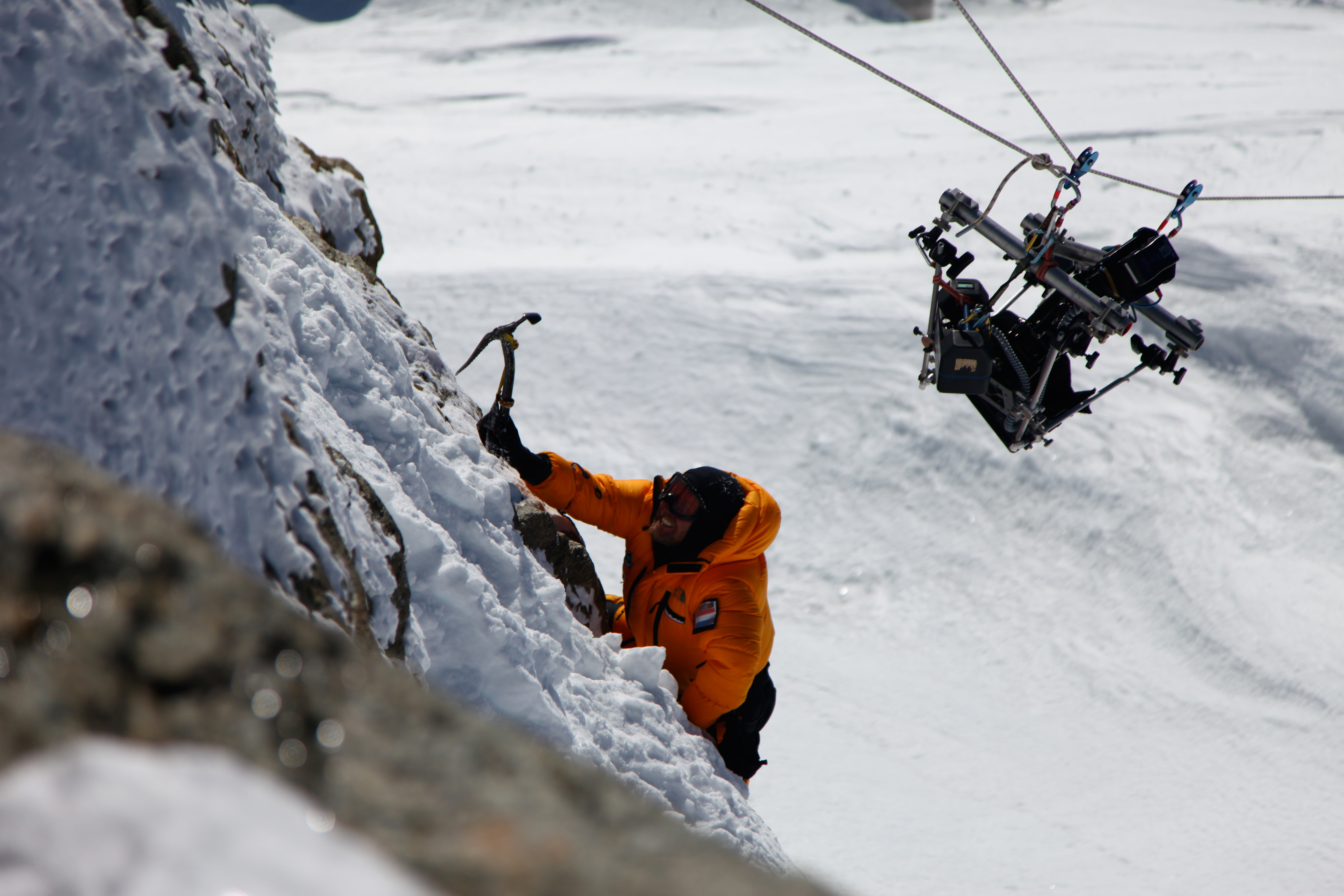Bad Milo!
Runs Fri., Oct. 4–Thurs., Oct. 10 at SIFF Cinema Uptown. Rated R. 85 minutes.
There are places even the celebrated body-horror filmmaker David Cronenberg wouldn’t go. Places—you might say—where the sun don’t shine. Such a place is explored in Bad Milo!, an energetic exercise in execrable taste that locates the source of its protagonist’s problems in the lower gastrointestinal tract. Ken (Ken Marino) carries a lot of stress inside him: His job as a number-cruncher is poisoned by a corrupt boss (Patrick Warburton); his wife (Gillian Jacobs) wants a child; and his father (Stephen Root) won’t speak to him. Ken’s mother (Mary Kay Place) has taken up with a much younger man (Kumail Nanjiani), and they suspect Ken’s physical ailments are a sign of erectile dysfunction.
If only. No, the source of Ken’s chronic stomach pain is the big-eyed, sharp-toothed demon living inside his colon. The beastie, named Milo, has the ability to leap out and slaughter Ken’s enemies. As if that weren’t bad enough, Milo has the ability to slip back inside his host after running his errands, which somehow seems much, much worse. Director Jacob Vaughn includes just enough social context to prove he knows what he’s doing; in a world of cold corporate behavior and personal estrangement, why wouldn’t the demons inside begin to run amok? And thanks to explanations from Ken’s therapist, played by Fargo’s Peter Stormare at his wiggiest, we’re left with no doubt that Milo exists to act out Ken’s repressed wishes and represent the undigested compromises of existence.
If it is not already evident, we should note that Bad Milo! is absolutely a comedy. The non sequiturs come in a steady stream, and the actors—as the end-credits blooper reel confirms—have been encouraged to improvise their way through individual scenes. (Toby Huss, as the doctor who informs Ken that he appears to have “a trouper in your pooper,” is especially incorrigible; he could easily merit his own DVD extra feature.) The cast is expert, led by the big-shouldered, straight-faced Marino, a veteran of The State and its comedic spinoffs. Still, there is no skimping on horror-movie gore, which makes the movie difficult to peg: It’s funny, it’s gross, and it has a few serious things on its mind. Is it any wonder David Cronenberg is thanked in the end credits? Robert Horton
PGravity
Opens Fri., Oct. 4 at Cinerama and other theaters. Rated PG-13. 91 minutes.
Why are they even offering this movie in non-3-D format? With George Clooney and Sandra Bullock stranded in orbit, menaced by regular bombardments of space debris? With the oxygen running out and no prospect of rescue from Earth? Of course you should spend the extra money on 3-D. That’s not even a decision. You should see it on the biggest possible screen. You should see it at the early shows on Thursday night. Then you should go back and see it again with friends who weren’t savvy enough to preorder Thursday tickets online. It’s that kind of movie.
Back on Earth, Dr. Stone (Bullock) is just the sort of Type A high-achiever who would make her online movie reservations early. Absent a family, she’s entirely devoted to her work, which involves some sort of experiment on the Hubble Space Telescope. We begin the movie outside that orbiting platform, as she and veteran astronaut Kowalski (Clooney) are performing routine repairs. She’s tethered to a giant arm. He’s cavorting about with a jet pack—of course Clooney gets the jet pack—and listening to country music. Kowalski’s cocky, experienced, about to retire; Stone’s the eager newbie trying to prove she’s got the right stuff. She has her chance, and then some, in the astonishing 12-minute opening sequence, seamlessly rendered via CGI by director Alfonso Cuaron (Children of Men, Y Tu Mama Tambien).
Because there’s no sound in space (i.e., no atmosphere to relay that sound), Stone’s panicked breathing and frantic radio calls provide the human pulse to the terrifying scene, as bullet-speed space garbage cascades upon the shuttle and its fragile crew. (Like sins from the past, decomposing old Cold War satellites have caused the orbiting trash fusillade.) The camera occupies no fixed position. There is no up or down in the frame as it pushes and swoops among the wreckage and flailing astronauts. Scant warning of the disaster comes from ground control in Houston, voiced by Ed Harris, a nice little nod to Apollo 13. With so many satellites down, quips Kowalski, “Half of North America just lost their Facebook.”
Spinning into the void, Stone can’t get her bearings; and the rest of the film consists of her navigating from one problem to the next. If the shuttle is disabled, let’s get to the International Space Station. If no one’s home there, let’s try the Chinese station next door. For all its technical marvels and breathtaking panoramas reflected in Stone’s visor, Gravity is a very compact and task-oriented picture. It’s both space-age and hugely traditional, though with a modern, self-aware heroine who inevitably begins talking to herself—“You gotta be kidding me!”—to fight the loneliness and complain of each new setback. From speeding bus to orbiting space capsule, Bullock is again the everywoman confronted with haywire technology. And her character’s exasperated vulnerability makes for an interesting contrast to stoic, shipwrecked Robert Redford in All Is Lost, due October 25.
As Stone retreats through airlock and bulkhead to find safety, grabbing at latches and lifelines dangling in her 3-D POV, each narrow escape recalls D.W. Griffith and the silent era. She has a bit of sad personal history to share with Kowalski, but otherwise she’s living (barely) in the moment of pure present peril. If one thing isn’t trying to kill her, another thing is. In a marvelously forward-thrusting film that doesn’t need much dialogue or introspection, Stone scores her biggest laugh with an exasperated aside: “I hate space.” Thanks to Cuaron, we know just the feeling. Brian Miller
Herb & Dorothy 50 x 50
Runs Fri., Oct. 4–Thurs., Oct. 10 at Northwest Film Forum. Not rated. 87 minutes.
Dorothy and Herbert Vogel were the subjects of a prior doc by Megumi Sasaki, which played NWFF in 2009, the year after Seattle Art Museum was announced a beneficiary of their 50 Works for 50 States bequest. Those donated works went on view at SAM this past March, and the exhibit runs through October 27. If you saw the first film, this one doesn’t add much. If you’ve been to the museum or are planning a visit, it’s well worth seeing.
In brief, the Vogels were humble young collectors in the early ’60s whose buying criteria were essentially small, affordable, and minimalist. (They had no kids and enjoyed a rent-controlled Manhattan home.) Three decades later, they promised the National Gallery their 5,000 acquisitions, all kept in their one-bedroom apartment (!) —more than the Washington, D.C., institution could possibly store or exhibit. Thus the 50 by 50 program, which would send 2,500 works to museums in all the states. (We got works by Stephen Antonakos, Sol LeWitt, Terry Winters, Cheryl Laemmle, Robert Mangold, and others.)
In declining health (particularly Herb), the Vogels clearly trust Sasaki, who trails them to museum openings and receptions in New Jersey, Hawaii, Nevada, and even North Dakota. It’s a celebratory tour where they’re treated like rock stars, and this modest, middle-class couple clearly relishes the attention. (Herb plays the curmudgeon, but lets slip a few proud smiles.) During the recession, one museum director explains, they can’t afford to make acquisitions, so the Vogels’ gift is all the more striking. Artists they supported are interviewed (some resist the collection’s dispersal), and this also makes for a repetitive tribute of praise for and demurral by the Vogels. You might not share their taste or like everything now hanging at SAM, but it’s impossible not to admire their generosity. Brian Miller
Parkland
Opens Fri., Oct. 4 at Pacific Place and Sundance Cinemas. Rated PG-13. 93 minutes.
The only interesting thing about Parkland is that it exists. And it exists because of our collective unwillingness to let go of what happened on November 22, 1963, the day a young prince died and a still-unresolved mystery began. Culled from Vincent Bugliosi’s 2007 book Four Days in November, the movie presents narrow-gauge vignettes, acted out by supporting players in Dallas during the tragedy. Supporting players, but not peripheral. The most gripping section of the film unfolds at Parkland Hospital, where an unsuspecting overtime ER crew deals with the arrival of a U.S. president with a severe head wound. Marcia Gay Harden contributes her granite professionalism as the nurse on duty; although here, as in other episodes, the cast tends toward the TV-guest-star vein, with Zac Efron and Colin Hanks also pulling duty. (Hanks’ dad, Tom, produced the film.)
There’s a very dull storyline about Lee Harvey Oswald’s brother Robert (James Badge Dale), enlivened only by the battiness of Oswald’s mother (Jacki Weaver, in her Animal Kingdom monster mode). The movie takes no position on Oswald’s guilt or any conspiracy theories surrounding the Kennedy assassination, because it keeps its gaze at ground level. The director, longtime investigative reporter Peter Landesman, seeks to show things “as they happened” and forgo commentary. So take that, Oliver Stone.
An entire feature could be made from the story of Abraham Zapruder, whose name became a household word after he clocked the presidential motorcade with his 8 mm camera. In Parkland, Zapruder’s story repeats a single note—anguish—as it tracks the sudden attention he gets from a Secret Service agent (Billy Bob Thornton, a good turn) and a Life magazine representative. As Zapruder, Paul Giamatti does his expected fine work, but he’s got nowhere to go either. Everybody keeps watching the Zapruder film, reacting in horror, and not finding an answer.
Watching Parkland, you may feel the same way. The whole movie is like adding more frames to an already endless film loop—as if by sifting through these remnants we’d settle something. When Woody Allen’s character in Annie Hall realized his obsession with the JFK case was just a way of avoiding intimacy with his wife, it was a clever passing joke. Now it looks like an accurate diagnosis of the national sickness, our inability to live with the idea that we might never know what happened—or that the likeliest explanation is insufficiently grand to fit such a history-altering event. Parkland is a particularly feeble drop in the bucket. Robert Horton
The Summit
Opens Fri., Oct. 4 at Harvard Exit. Rated R. 99 minutes.
Only a few Seattle climbers have seen the top of K2, Everest’s less-traveled little brother in Pakistan, which has a staggering 1:4 ratio of deaths to summit successes. In 2008, as was widely reported, 11 mountaineers perished in a cascade of bad judgment and warm-weather-caused icefall on the 8,000-meter peak. (Global warming? Maybe.) Nick Ryan’s documentary uses reenactments, fresh interviews, and some original footage to chronicle that calamity, with emphasis on Irish alpinist Gerard McDonnell, his countryman, who was making his second attempt on K2.
This storytelling here isn’t Into Thin Air, and the conflicting testimony among several nationalities and rival expeditions is not a model of clarity. It’s like Rashomon in the Death Zone. None of those oxygen-starved brains are ever going to agree on a sequence of events. It’s like asking drunks about a bender five years after the fact. After fixed lines are severed by a massive icefall that strands McDonnell and others on the deadly descent, there is no central, reliable Krakauer figure on the mountain. (Books have since been written, and the Internet was abuzz with reports even before the body count was known.)
As a result, sober analysis of the incident gives way to weepy testimonials—padded with the story of Italy’s first ascent of K2 in ’54—in an avalanche of sentiment. Whenever possible, Ryan opts for tears and conjecture instead of facts. His intent, it emerges, is to make McDonnell the hero, an Italian alpinist the heel, and the South Koreans the clowns who got in everyone’s way. But really, as with most big mountaineering disasters, the weather and overcrowding are to blame. As all the teams swarmed the same bottleneck, a Dutch climber recalls, “Everyone wants to use this window,” meaning the clear skies overhead. But the fixed lines weren’t ready because the different teams hadn’t cooperated, and McDonnell sensibly asks “Aren’t we too late?” about the slow progress beneath huge overhanging seracs. (Those, viewed in real photos and video, are terrifying—like office towers made of ice, gradually coming unfrozen from the mountain.)
As on Everest in ’96, climbers were suckered by the weather. All their costly preparations couldn’t match their harsh, lofty objective, notes the late, legendary Walter Bonatti: “Only the mountain attains perfection.” Brian Miller
E
film@seattleweekly.com






